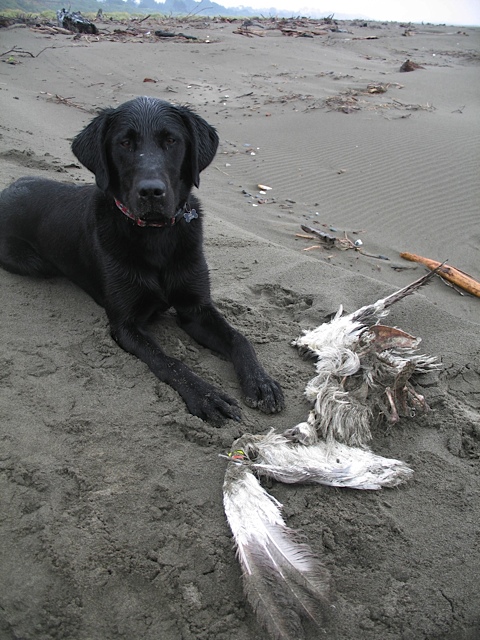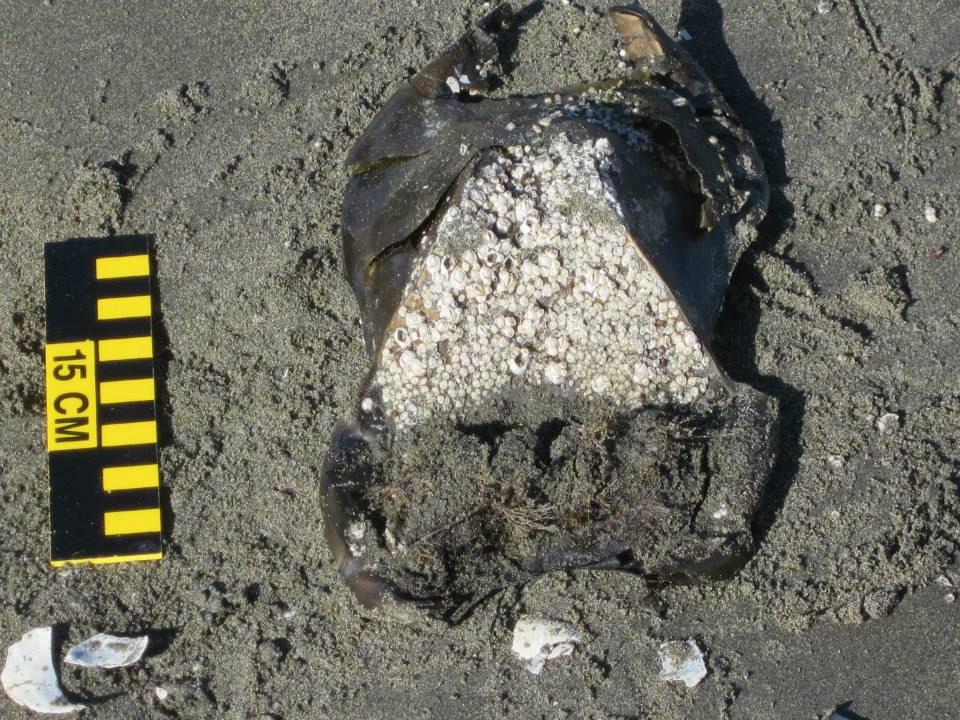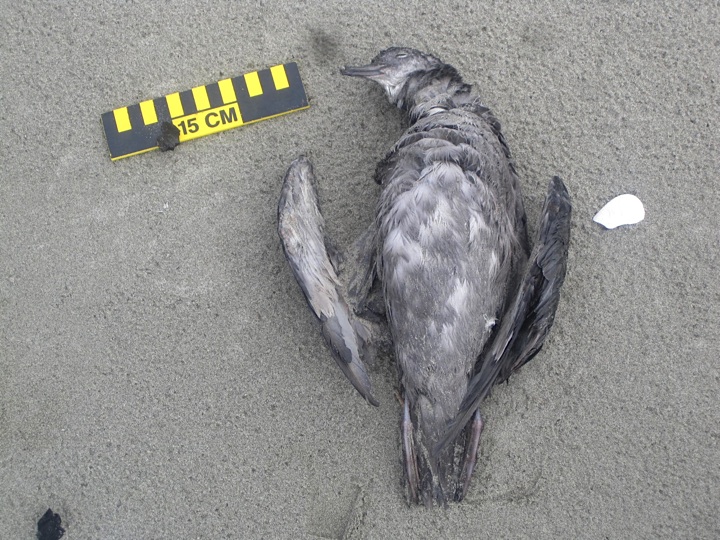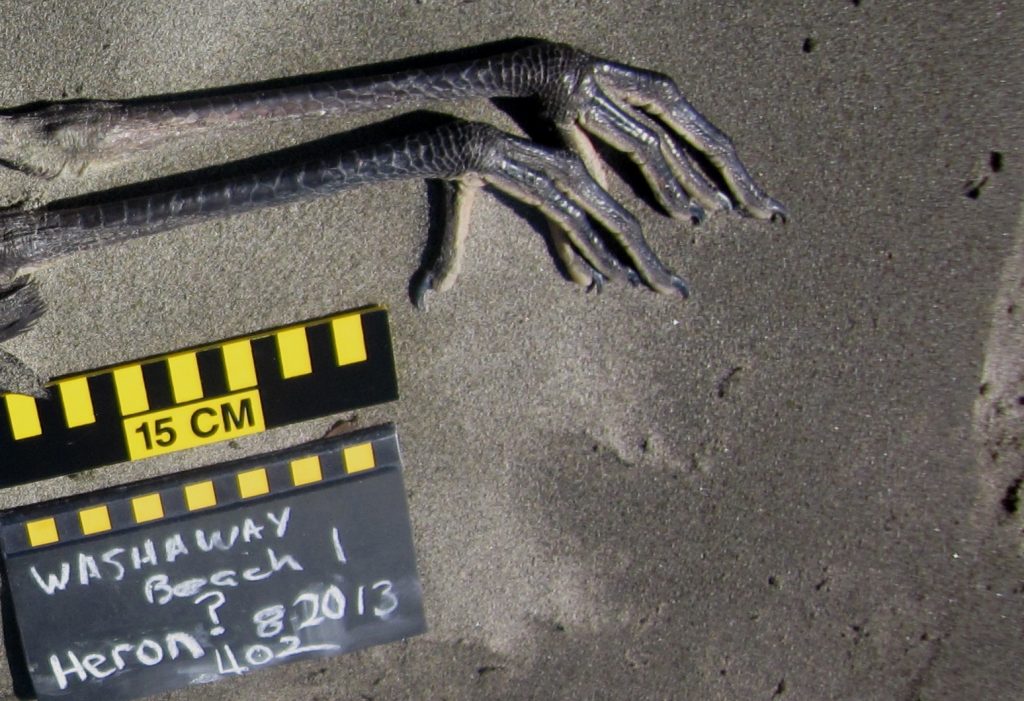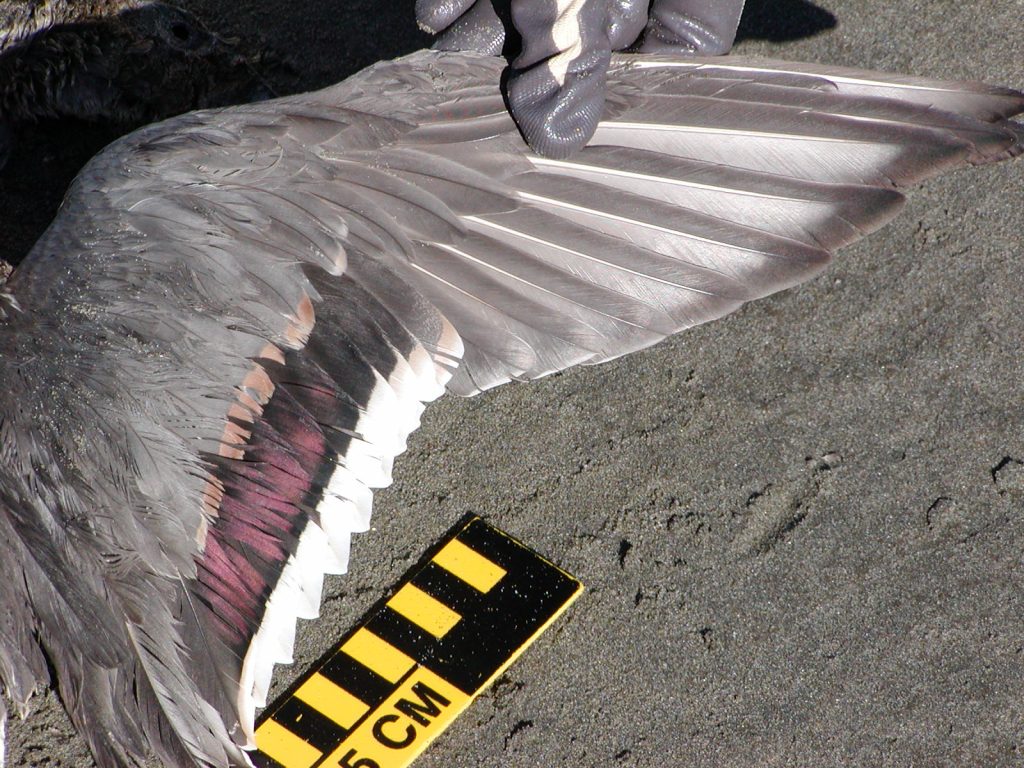Fall is here and the Common Murres are hitting the beach. We’ve been receiving lots of surveys with lots birds! This is nothing out of the ordinary for this time of year, but you should expect longer and “birdier” surveys than your usual. Make sure to start early and bring a snack. Now is also a good time to check your cable tie supply to see if you’re running low of any color.
Here’s a look at what’s washed in over the last few weeks:
 A Laysan Albatross found by Kathy on the South Coast (WA). Those three-webbed toes and huge foot (tarsus >75mm) point us to the Tubenose: Albatross family. From here we have three species to consider: Black-footed Albatross, Laysan Albatross, and Short-tailed Albatross. The bill length is WAY smaller than a STAL (130-140mm), and the pale bill and feet rule out BFAL, we’re left with the Laysan Albatross.
A Laysan Albatross found by Kathy on the South Coast (WA). Those three-webbed toes and huge foot (tarsus >75mm) point us to the Tubenose: Albatross family. From here we have three species to consider: Black-footed Albatross, Laysan Albatross, and Short-tailed Albatross. The bill length is WAY smaller than a STAL (130-140mm), and the pale bill and feet rule out BFAL, we’re left with the Laysan Albatross.
A Green-winged Teal found by Susie and Bill in Oregon North – time for some more wing practice!
Using the wing table, at 17cm, the wing falls into the tiny (wing chord <18cm) row but because it’s right on the edge, let’s also consider small (18-20cm) row. That area of contrasting color in the secondaries puts us in the Patch/Speculum group, giving us four options in the two rows; BUFF (WF15), HOGR (GR6), PIGU (AL10) or GWTE (WF7). Bufflehead, Horned Grebe and Pigeon Guillemot have a white patch on the upperwing – not a match. But the green and black speculum with buffy bar in front and white behind is a perfect match for the Green-winged Teal.
Using the west coast wing key, we’d select “secondaries contrasting and dark” for the first question sending us to Q18. Here, we’d select “green, w/ tan strip above and white below.” With a wing chord of 17 cm, we have a Green-winged Teal.
Using the Alaska wing key, we’d select “w/ light or dark speculum and/or one or more white patches” sending us to Q17. Here, we’d choose “dark speculum, no patch” leading to Q24. The “green w/buffy stripe above and white below” points us to the Green-winged Teal (a little short for Alaska birds, but that’s okay – this find is from Oregon).
A Mottled Petrel found by Sue and Scott on the North Coast. You won’t find a species page on this bird in the COASST field guides, but you can still get pretty far on the ID. The three webbed toes with a small fourth toe and flat heel (not quite visible in the photo) would take you to the Tubenoses:Petrels family.
Using the west coast guide, a wing chord of 25cm puts this in the True Petrels group. From here, we consider the bill shape, tarsus, and bill color: thick and short (bill), round (tarsus), and black (bill color) – group: Gadlfy Petrels. With this guide, we can’t get any more specific than the subgroup of Gadfly Petrels.
Using the Alaska guide, a wing chord of 25cm puts drops us into the True Petrels group. Bill color is dark, underiwng is white, with “dark stripe from wrist to wingpit.” Yep – Mottled Petrel!
A gas cylinder found by Phil in the San Juans. Remember, if you find an item like this, do not touch or attempt to move. These items should be reported to the National Response Center by calling 1-800-424-8802 or visiting their website or to local law enforcement.






